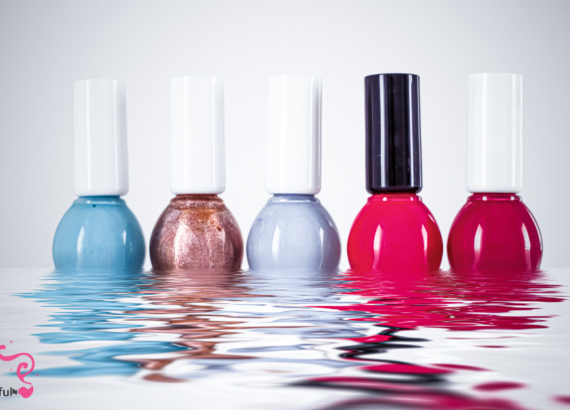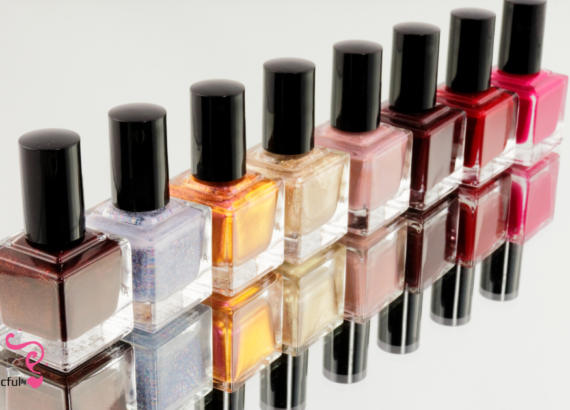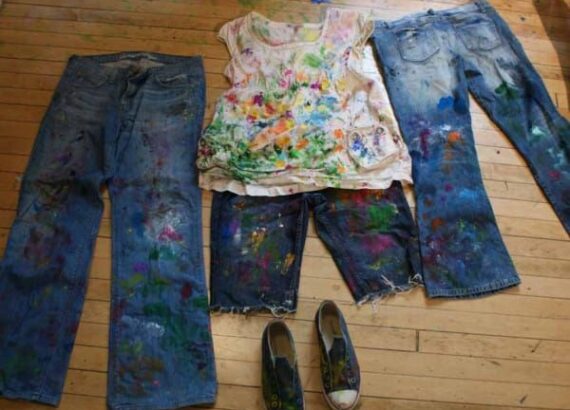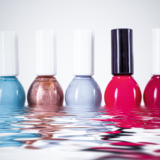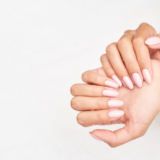How to Make Blood Color with Acrylic Paint

Art is a vibrant world where creativity knows no bounds. Whether you’re a seasoned artist or a novice exploring the world of acrylic paint, the ability to create unique colors adds an exciting dimension to your work. In this guide, we’ll delve into the intriguing process of making blood color with acrylic paint, offering step-by-step insights to unlock your artistic potential.
Introduction
Acrylic paint, known for its versatility and vivid pigments, opens up a myriad of possibilities for artists. One captivating endeavor is creating a blood-red hue that adds drama and intensity to your artwork. Let’s embark on this artistic journey, where you’ll not only learn to mix colors but also discover the nuances that make your artwork truly unique.
I. Exploring Color Theory
First thing to remember, color theory forms the backbone of any artist’s palette, offering a fascinating journey into the world of hues and tones. Let’s unravel the basics of color mixing and understand the concepts of primary, secondary, and tertiary colors.
II. Understanding Acrylic Paint
Acrylic paint consists of pigments suspended in a polymer emulsion. Its fast-drying nature and flexibility when dry make it a preferred choice for many artists. Before diving into color mixing, it’s essential to understand the properties of acrylic paint and how it interacts with different surfaces.
III. Exploring Color Theory
1. Basics of Color Mixing
Understanding how colors interact and blend is fundamental to creating visually striking artwork. Color mixing involves combining different pigments to produce new shades. The primary colors—red, blue, and yellow—serve as the building blocks for all other colors.
Primary Colors
- Red: The foundation of warm tones, red is a powerful and emotive color.
- Blue: A cool and calming color, blue is essential for creating a range of hues.
- Yellow: The brightness of yellow adds warmth and energy to the color spectrum.
Secondary Colors
When primary colors are mixed, they create secondary colors, opening up a broader palette for artists.
- Orange (Red + Yellow): Combining the warmth of red with the brightness of yellow yields a vibrant orange.
- Green (Blue + Yellow): Blending the coolness of blue with the warmth of yellow results in a lush green.
- Purple (Red + Blue): The fusion of red and blue produces the regal and deep tones of purple.
Tertiary Colors
Tertiary colors emerge when a primary color is mixed with its adjacent secondary color. This adds complexity and depth to the color wheel.
- Red-Orange: A warm and fiery hue, blending red and orange.
- Yellow-Green: The refreshing combination of yellow and green.
- Blue-Purple: A cool and calming shade formed by mixing blue and purple.
Understanding the relationships between these colors allows artists to create harmonious and visually appealing compositions.
2. Primary, Secondary, and Tertiary Colors in Action
Imagine a painter’s palette filled with the primary colors—red, blue, and yellow. As these colors mix, a spectrum of secondary and tertiary colors comes to life on the canvas. This dynamic interplay provides artists with an extensive range of choices, enabling them to evoke specific emotions and convey meaning through their artwork.
In practical terms, exploring color theory empowers artists to:
- Create Depth: Tertiary colors add depth and nuance to a piece, allowing for subtle shifts in tone and intensity.
- Convey Mood: The choice of primary, secondary, and tertiary colors influences the emotional impact of a composition. Warm colors evoke energy and passion, while cool colors provide a sense of calm.
- Achieve Realism: Understanding how light interacts with different colors enables artists to capture realistic scenes and objects.
In conclusion, delving into color theory is a journey of discovery for artists. Mastering the basics of color mixing and understanding the relationships between primary, secondary, and tertiary colors open up a world of creative possibilities. Whether you’re aiming for bold and vibrant or subtle and sophisticated, color theory is your guide to bringing your artistic vision to life on the canvas.
IV. Choosing the Right Acrylic Paints
1. Quality Matters: Pigments and Brands
When it comes to selecting acrylic paints, quality is paramount for unleashing your artistic prowess. Delving into the world of pigments and brands can significantly impact the outcome of your masterpiece.
i. Pigments
First thing to remember at the heart of every acrylic paint is its pigment—the color-rich component that defines its vibrancy. Opt for paints with high-quality pigments, ensuring a rich and intense color payoff. Seek out paints labeled as lightfast, indicating resistance to fading over time and preserving the longevity of your artwork.
Understanding pigments empowers you to control color mixing, transparency, and texture. Quality pigments serve as the foundation for your creative expression, allowing you to bring your vision to life with precision.
ii. Brands
Navigating the myriad of acrylic paint brands can be a journey of discovery. Choosing reputable and established brands ensures a consistent level of quality and reliability. Renowned brands invest in research and development, providing artists with a diverse color palette and innovative formulations.
Before making your selection, delve into reviews from fellow artists, consider the brand’s reputation, and explore the range of colors they offer. Experimenting with different brands allows you to find the perfect match for your unique style and artistic preferences.
2. Importance of a Varied Color Palette
A varied color palette is the key to unlocking the full spectrum of your artistic vision. While the primary colors are fundamental, expanding your collection opens the door to limitless creative possibilities.
i. Unleashing Creativity
A diverse color palette serves as your artistic playground, allowing you to experiment with an array of tones and shades. Whether you’re aiming for subtle nuances or bold contrasts, a varied palette equips you to express your creativity without limitations.
ii. Expressing Emotion and Atmosphere
Colors evoke emotions and set the tone for your artwork. Earthy tones may convey warmth and nostalgia, while cool blues create a sense of calm. A varied color palette empowers you to infuse your compositions with the full spectrum of human experience, adding depth and emotion to your creations.
iii. Enhancing Visual Impact
The right combination of colors enhances the visual impact of your artwork. Experimenting with contrasts, harmonies, and unexpected pairings captures attention, guiding the viewer’s gaze and leaving a lasting impression. A varied palette adds dynamism and interest to your compositions, elevating your artistic expression.
V. Tools and Materials Needed
1. Paintbrushes, Palette, and Mixing Surface
Equipping yourself with the right tools is essential for a seamless artistic process. Here’s a breakdown of the must-have tools and materials:
i. Paintbrushes
Invest in a variety of brushes to cater to different techniques and strokes. Flat brushes for broad strokes, round brushes for detailing, and fan brushes for texture can form the foundation of your toolkit. Experimenting with different brush sizes and shapes allows for versatility in your artistic expression.
ii. Palette
A palette is your artist’s palette—literally. It’s where you mix and blend your colors to achieve the perfect shade. Choose a palette that suits your preferences, whether it’s a traditional handheld palette or a stay-wet palette that keeps your paints moist during extended work sessions.
iii. Mixing Surface
Selecting the right surface for mixing is crucial. A smooth, non-absorbent surface, such as glass or a dedicated acrylic palette, allows for easy blending and cleaning. It’s the canvas for your color alchemy, so choose wisely.
2. Safety Precautions
Artistic expression should always be paired with safety. Here are essential safety precautions to keep in mind:
i. Ventilation
Ensure you’re working in a well-ventilated area, especially if you’re using mediums or varnishes with strong fumes. Adequate ventilation prevents the buildup of potentially harmful substances.
ii. Protective Gear
Consider wearing protective gear, such as gloves and a smock, to shield your skin and clothing from paint splatters. Safety glasses can also be beneficial, especially if you’re working on projects that involve splattering techniques.
iii. Brush Cleaning
Clean your brushes thoroughly to avoid skin irritation or respiratory issues. Use a gentle brush cleaner, and always rinse brushes immediately after use to prevent dried paint buildup.
iv. Storage
Store your paints and art supplies in a cool, dry place. Extreme temperatures can affect the consistency of your paints, so proper storage ensures their longevity.
VI. Creating the Base Color
Start by selecting the primary color for your blood-red shade. A deep red can serve as an excellent base. Experiment with the intensity by adjusting the amount of paint and water until you achieve the desired richness.
VII. Introducing Additional Colors
1. Gradual Mixing for a Nuanced Effect
The art of introducing additional colors to your acrylic masterpiece is a delicate dance that requires precision and a keen eye for nuance. Let’s explore the technique of gradual mixing to achieve a nuanced effect in your color palette.
i. Understanding Gradual Mixing
Gradual mixing involves adding small increments of a secondary or tertiary color to your base color. This incremental approach allows you to control the intensity and saturation of the new hue, creating a subtle transition that adds depth and complexity to your artwork.
ii. Tips for Gradual Mixing:
- Start with Small Amounts: Begin by adding a tiny amount of the additional color to your base. You can always add more, but it’s challenging to reverse the process if you’ve added too much.
- Blend Thoroughly: Ensure thorough blending between each addition. This prevents abrupt shifts in color and maintains a smooth, graduated transition.
- Observe the Changes: Pay close attention to the changes in color as you mix. Gradual mixing allows you to stop at the exact point where the desired nuance is achieved.
- Experiment with Complementary Colors: To create depth, experiment with complementary colors. Adding a touch of a color’s complement can enhance the richness of the mix without muddying the overall hue.
2. Avoiding Muddiness in the Color
While the art of mixing colors is inherently experimental, the goal is to avoid muddiness and maintain clarity in your palette. Muddiness often occurs when too many colors are mixed without careful consideration. Here’s how to steer clear of color chaos:
i. Use a Limited Palette:
- Limit the number of colors on your palette to maintain clarity.
- Choose a harmonious color scheme that complements your artistic vision.
ii. Clean Your Brushes:
- Clean your brushes thoroughly between color mixtures to prevent unintended blending.
- Use separate brushes for different colors to avoid cross-contamination.
iii. Allow Layers to Dry:
- Let each layer dry before adding another to prevent unintentional muddying.
- This approach is particularly crucial when working with transparent colors.
iv. Practice Patience:
- Take your time with each addition, allowing the colors to interact and settle.
- Rushing the process increases the likelihood of muddiness.
VIII. Experimenting with Tints and Shades
1. Adding White or Black to Alter the Color
Experimenting with tints and shades introduces a dynamic element to your acrylic palette, allowing you to play with light and darkness. Understanding the impact of adding white or black to your colors opens up new possibilities for artistic expression.
i. Creating Tints:
- Adding white to a color creates a tint, producing a lighter and often more pastel version of the original hue.
- Gradually add white, blending thoroughly, until the desired level of lightness is achieved.
ii. Crafting Shades:
- Introducing black to a color results in a shade, producing a darker and more muted version.
- Exercise caution, as a little black can go a long way. Start with small amounts and build up gradually.
2. Balancing Light and Dark Tones
Achieving a harmonious balance between light and dark tones is key to creating visually appealing and dynamic artwork. Consider the following tips:
i. Play with Contrast:
- Experiment with contrasting light and dark areas to draw attention to specific elements in your composition.
- Contrast adds depth and visual interest to your artwork.
ii. Consider the Light Source:
- Think about the direction of light in your composition. Highlight areas that catch the light and shade areas that are in shadow.
iii. Blend Tints and Shades:
- Explore transitions between tints and shades to create smooth gradients and avoid abrupt shifts in tone.
iv. Use Neutral Colors:
- Incorporate neutral colors to balance intense tints and shades. Whites, grays, and browns can act as stabilizing elements in your color palette.
IX. Adding Texture and Dimension
1. Techniques to Enhance Visual Appeal
As an artist, the journey of creating captivating artwork goes beyond color mixing. Adding texture and dimension elevates your piece to new heights, captivating viewers with a multi-sensory experience. Let’s delve into techniques that enhance the visual appeal of your acrylic masterpiece.
2. Texture Techniques:
- Impasto: Apply thick layers of paint using a palette knife or brush to create a textured, three-dimensional effect. This technique adds a tactile quality, making the artwork come alive.
- Sgraffito: Scratch or carve into the painted surface to reveal underlying layers. This technique introduces intricate patterns and textures, adding depth to your composition.
- Collage Elements: Incorporate additional materials, such as paper, fabric, or even sand, into your painting. The combination of different textures creates a dynamic and visually interesting surface.
3. Dimension through Layering:
- Foreground and Background: Experiment with layering to distinguish between foreground and background elements. This adds depth and guides the viewer’s eye through the composition.
- Transparent Layers: Apply translucent layers of paint to create a sense of depth. This technique is particularly effective in conveying atmospheric effects or portraying ethereal subjects.
- Fine Detailing: Use smaller brushes for fine detailing. Adding intricate details to specific areas enhances the overall visual richness of the artwork.
X. Considering the Surface
1. Adapting Color for Different Canvases
The surface you choose for your artwork significantly influences how colors interact and appear. Each canvas—whether paper, canvas, or wood—presents unique characteristics that require thoughtful consideration.
i. Paper:
- Consider the absorbency of paper. Colors may appear more vibrant on absorbent paper, but be cautious of potential warping.
- Experiment with textured papers to add an additional layer of interest to your artwork.
ii. Canvas:
- Stretched canvas provides a versatile and stable surface for acrylics. Colors retain their vibrancy, and the canvas texture can enhance certain techniques.
- Consider priming the canvas for a smoother surface or leaving it unprimed for a more absorbent texture.
iii. Wood:
- Wood panels offer a solid and rigid surface. The natural grain can influence how colors are perceived.
- Seal the wood properly to prevent absorption and ensure the longevity of your artwork.
Special Considerations:
- Underpainting: Adjust the color of your underpainting based on the canvas. A contrasting underpainting can influence the overall color harmony.
- Surface Preparation: Prepare the surface adequately. For canvas, consider priming to control absorbency. For wood, ensure a smooth and sealed surface for optimal color application.
- Experimentation: Don’t hesitate to experiment with different surfaces. Each one presents unique challenges and opportunities, contributing to your artistic exploration.
XI. Troubleshooting Common Issues
1. Fixing Uneven Colors
Creating a seamless and consistent color palette is essential for the visual impact of your acrylic artwork. If you encounter issues with uneven colors, fear not—troubleshooting and corrective measures can restore balance to your composition.
i. Causes of Uneven Colors:
- Uneven Base Coat: Ensure your base color is applied evenly. Inconsistencies in the foundation can lead to variations in subsequent layers.
- Brush Strokes: Pay attention to your brush strokes. Overlapping strokes or inconsistent pressure can result in uneven color distribution.
- Drying Time: Allow sufficient drying time between layers. Applying new colors to partially dry or tacky surfaces can lead to uneven blending.
ii. Corrective Measures:
- Layer Adjustment: Apply additional layers to even out the color. Gradual and controlled layering can help blend colors seamlessly.
- Blending Techniques: Use blending techniques, such as dry brushing or feathering, to smooth transitions between uneven colors.
- Glazing: Apply a translucent glaze over the uneven areas. This not only evens out the color but also adds depth to your artwork.
2. Preventing Cracking or Peeling
Preserving the integrity of your acrylic masterpiece involves addressing potential issues like cracking or peeling however, understanding the causes and implementing preventive measures ensures the longevity of your artwork.
i. Causes of Cracking or Peeling:
- Too Thick Layers: Applying excessively thick layers of paint can lead to cracking as the paint dries and contracts.
- Insufficient Drying Time: Rushing the drying process can result in inadequate curing, leading to cracking over time.
- Flexible Mediums: Integrate flexible mediums into your paint mixture to enhance elasticity, reducing the risk of cracking.
ii. Preventive Measures:
- Layer Thickness: Apply paint in thin, even layers. If texture is desired, build up layers gradually to avoid excessive thickness.
- Drying Environment: Ensure your artwork dries in a consistent environment. Rapid drying or exposure to extreme temperatures can contribute to cracking.
- Flexible Mediums: Incorporate flexible mediums or extenders into your paint mixture. This enhances flexibility and reduces the likelihood of cracking.
XII. Showcasing Your Unique Blood Red
1. Displaying the Final Result
After navigating the creative process and overcoming any challenges, showcasing your unique blood-red creation is indeed a moment of pride. Let’s explore effective ways to present your artwork to the world.
i. Consider Presentation:
- Frame Selection: Choose a frame that complements your artwork. The right frame enhances the overall aesthetic and draws attention to the vibrant blood-red hues.
- Matting: If framing, consider matting for a polished and professional presentation. Matting adds a visual buffer, directing focus to the artwork.
ii. Photography Tips:
- Natural Lighting: Capture your artwork in natural light to showcase its true colors. Avoid harsh shadows that may distort the visual impact.
- Various Angles: Experiment with different angles while photographing. This allows viewers to appreciate the texture and dimension of your creation.
2. Encouraging Creativity and Experimentation
Your unique blood-red creation is not just a finished piece; it’s an invitation for others to explore their own artistic journeys. Encourage creativity and experimentation in the following ways:
i. Share Your Process:
- Social Media: Share your artistic process on social media platforms. Highlight the steps you took to achieve the blood-red hue, inspiring others to experiment with color mixing.
- Tutorial or Workshop: Consider creating a tutorial or hosting a workshop to guide fellow artists in replicating or adapting your technique.
ii. Embrace Imperfection:
- Encourage Mistakes: Remind aspiring artists that mistakes are part of the creative process. Embrace imperfections, as they often lead to unexpected and exciting results.
- Share Variations: Showcase variations of your blood-red creation. This demonstrates the versatility of color mixing and encourages artists to explore their own interpretations.
XIII. Sharing Your Artwork Online
In the digital age, sharing your artwork with a wider audience is easier than ever. Leverage social media platforms to connect with fellow artists, receive feedback, and inspire others on their creative journeys.
Conclusion
All in all creating a blood-red hue with acrylic paint is a rewarding journey that allows you to explore your artistic prowess. Remember, there are no strict rules—let your creativity flow. Embrace the imperfections, experiment with different techniques, and watch as your artwork comes to life with a vivid and unique color.
